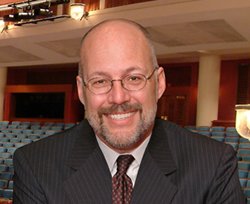Advocating for the Arts
It’s more than just asking for money…

Mark Nerenhausen, Founding Director of Syracuse University’s College of Arts and Sciences’ Janklow Arts Leadership Program penned the below guest blog post. It discusses the importance of advocating for the arts and why advocacy is so much more than just asking for money.
The days came and went, mostly unnoticed by the media. March 24 and 25 was National Arts Advocacy Day and as has been tradition, representatives from arts organizations made their annual pilgrimage to Washington, DC to lobby public officials for increased funding for the arts. The National Endowment for the Arts reports that its current $146 million budget represents 0.012 percent (about one one-hundredth of one percent) of federal discretionary spending. Not a lot of money comparatively, but still a popular target of those calling for budget cuts.
As someone who has devoted my professional life to the arts, I believe that public support of the arts is reasonable, justifiable and necessary. However, all too often, in making our case, arts leaders confuse advocacy with asking for more money for our organizations.
During the past decade, the term “community engagement” has become quite popular in the vocabulary of arts organizations. If we truly believe in our own language of engagement, we must rethink the true meaning of arts advocacy. Advocacy must mean more than simply asking for more money to support arts organizations. If we are true to our promises about engagement, arts advocacy must become synonymous with community advocacy.
Arts advocates have long justified public funding by pointing to the external benefits to which the arts contribute including improving education, stimulating the economy or encouraging creativity. Yet even while pointing to these ancillary benefits, the primary focus for advocacy has remained primarily on increasing arts funding. Ironically, this position often places the arts in competition for funding with the very causes the arts claim to benefit. There is a gap between our promise of community engagement and our actions.
For example, arts outreach programs are often intended to “develop future audiences” or to “build support for the arts.” In other words, arts outreach programs are often designed to influence the community to support the missions of arts organizations.
But what would happen if, instead of asking the community to support the arts, arts organizations asked how they could best support the community? True engagement comes from understanding and sharing common community goals and defining specific ways for the arts to contribute. When community engagement is genuine, outreach becomes unnecessary.
The days of funding art for art’s sake are behind us. The New York Times article of March 19, Wooing a New Generation of Museum Patrons, notes “20- and 30-somethings today are more interested in social causes like education, the environment and international aid than they are in the arts.”
To prosper in this environment, the new generation of arts leaders must authentically align the missions of their organizations with the needs and desires of their communities. Despite rhetoric from arts organizations about collaboration and engagement, it is all too rare for arts organizations to ask, “How can we serve, what can we contribute?” Advocacy for the arts must shift from simply pleading for more public money to demonstrating how the arts support the larger civic agenda.
When arts advocacy becomes community advocacy, we can better advance a shared agenda for the greater good of all. We will know the arts have succeeded when educators, social workers, economists, and community leaders join us for National Arts Advocacy Day. It will mean the arts have taken their rightful place as part of everyone’s lives.
Media Contact
Sarah Scalese
